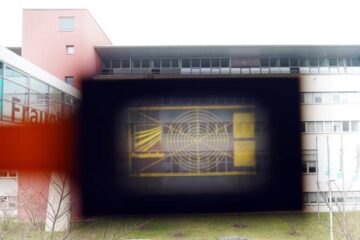Say Again?

Speakers Can Avoid Confusion for Listeners, Researchers Find
If someone told you to “put the apple in the basket on the table,” what would you do? Depending on how many apples and baskets are in your kitchen, it might not be clear. Would you move the apple in the basket to the table, or move the apple to the basket on the table? Had the speaker included the word “that’s” after the word “apple,” it would have eliminated any confusion. But people often fail to avoid such ambiguities when they speak. Previous research has shown that speakers choose their sentences based, in part, on how easy those sentences are to produce for themselves while not taking ease of comprehension into account. An ambiguous phrase is often easier to construct than an unambiguous one, so some people will speak ambiguously even if they are likely to be misunderstood.
Are speakers just unaware of the possibility for confusion? Are they deliberately trying to be uncooperative? Are they just lazy?
Researchers at the University of Edinburgh recently attempted to answer these questions. In their experiment, Sarah L. Haywood, Martin J. Pickering, and Holly P. Branigan employed a visual game that involved role swapping in order to determine whether a speaker’s choice of words in dialogue indicates a desire for ease of production, ease of comprehension, or both.
Their findings are presented in “Do Speakers Avoid Ambiguities During Dialogue” in the May 2005 issue of Psychological Science, a journal of the American Psychological Society.
Participants in the Edinburgh experiment were paired with a scripted confederate and played a game in which they alternated giving and following instructions to move objects around on a board. Some of the instructions given by the confederate were ambiguous (e.g. “Put the pig on the block on the heart”) and offered more than one possibility given the arrangement of objects; some were unambiguous statements (e.g. “Put the pig that’s on the block on the heart”) with only one possible interpretation.
The researchers found that acting as the listener of sometimes ambiguous instructions seemed to make participants aware of the consequences of speaking ambiguously. “We found that their utterances reflected a sensitivity to ambiguity,” the researchers wrote. “Speakers used optional disambiguating words (like that’s) more often when the array of objects would cause confusion for the listener.”
They concluded that speaker’s utterances do, in fact, reflect both the ease of production and ease of comprehension. “Speakers can take account of their listeners’ ease of comprehension, under the right circumstances,” they wrote.
Media Contact
More Information:
http://www.ed.ac.ukAll latest news from the category: Social Sciences
This area deals with the latest developments in the field of empirical and theoretical research as it relates to the structure and function of institutes and systems, their social interdependence and how such systems interact with individual behavior processes.
innovations-report offers informative reports and articles related to the social sciences field including demographic developments, family and career issues, geriatric research, conflict research, generational studies and criminology research.
Newest articles

Wildfire danger to increase due to climate change
WSL Institute for Snow and Avalanche Research (SLF) researchers expect an elevated wildfire danger in the Alpine Foreland from 2040 onwards due to changing meteorological conditions. The danger currently remains…

Advanced Brain Science Without Coding Expertise
Researchers at Helmholtz Munich and the LMU University Hospital Munich introduce DELiVR, offering a new AI-based approach to the complex task of brain cell mapping. The deep learning tool democratizes…

Transparent emissive microdisplays
… for ultra-light and compact augmented reality systems. As part of the HOT project (High-performance transparent and flexible microelectronics for photonic and optical applications), scientists from the Fraunhofer Institute for…





















